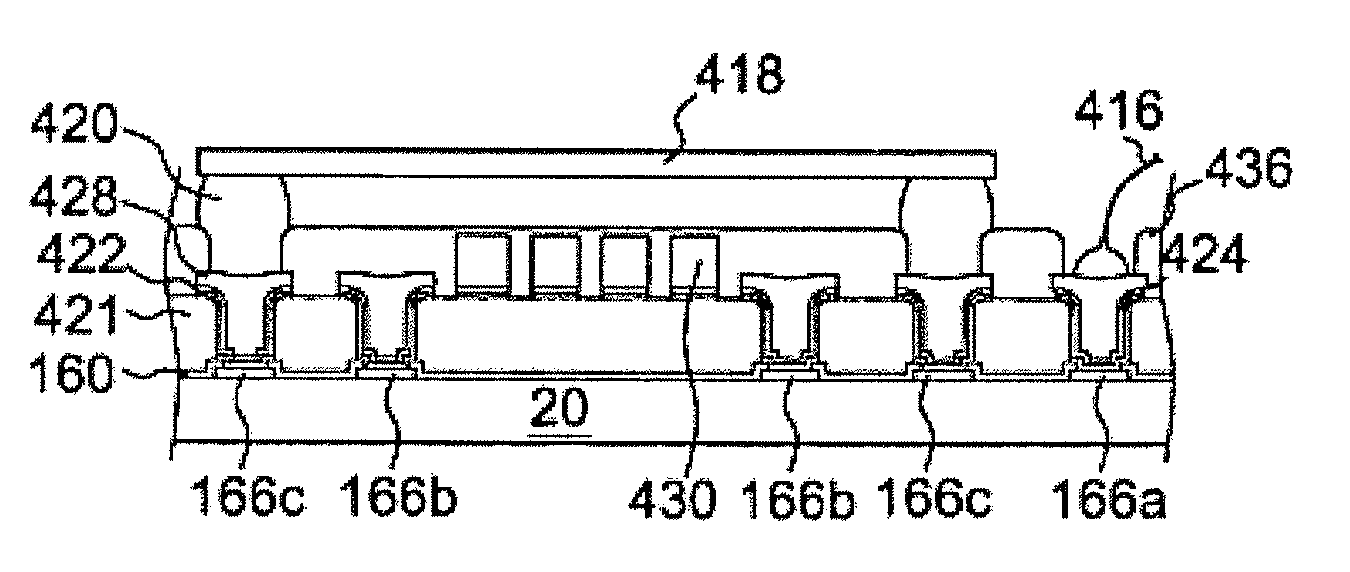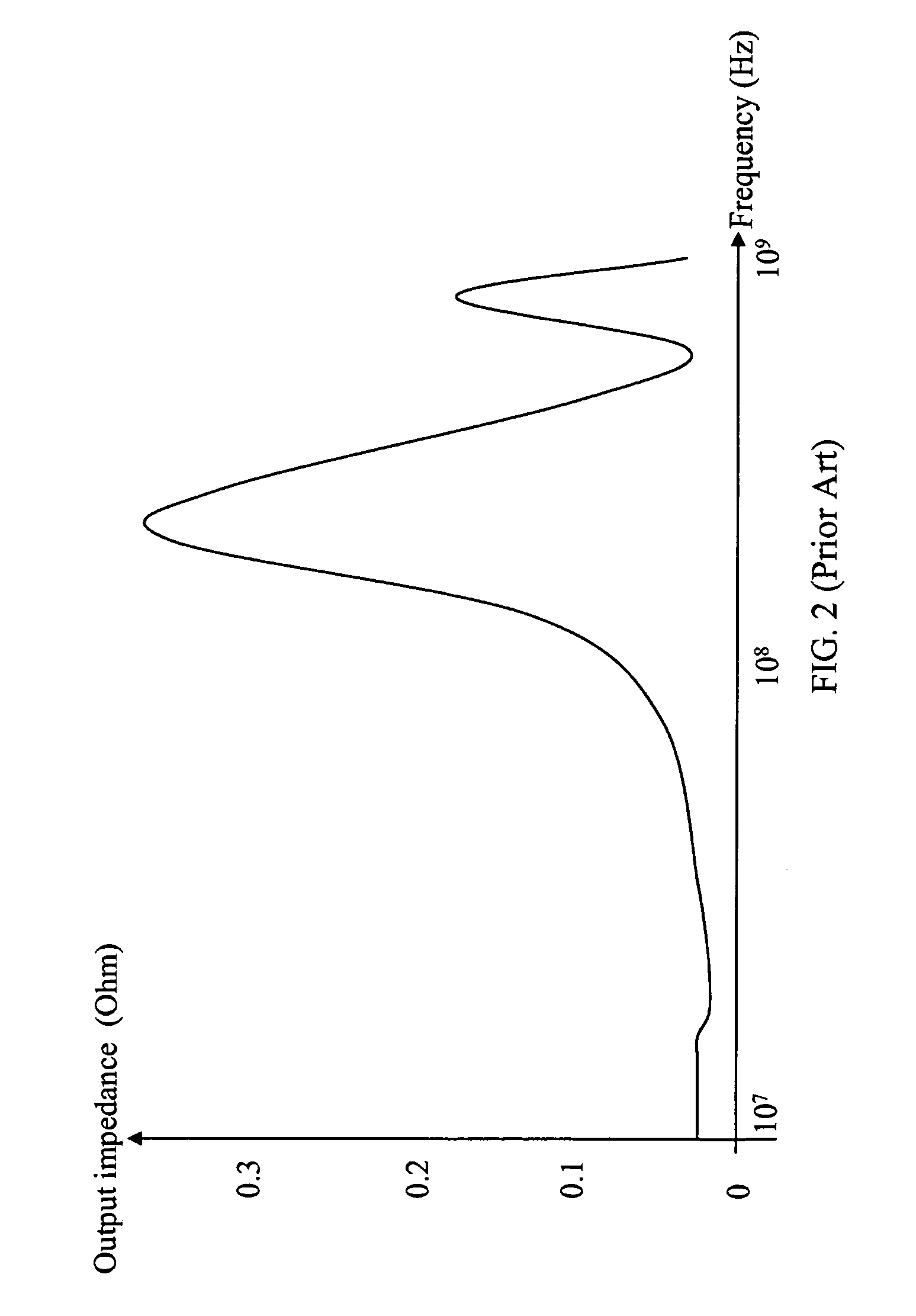Voltage regulator integrated with semiconductor chip
a voltage regulator and semiconductor chip technology, applied in the direction of dc-dc conversion, solid-state devices, basic electric elements, etc., can solve the problems of increasing the consuming a large amount of energy, and a large size of voltage regulators, so as to reduce the overall difficulty of circuit design, reduce manufacturing costs, and reduce the transient response time
- Summary
- Abstract
- Description
- Claims
- Application Information
AI Technical Summary
Benefits of technology
Problems solved by technology
Method used
Image
Examples
embodiment 1
[0053]In reference to FIG. 7, substrate 100 is a type of semiconductor base. This substrate can be silicon based, gallium arsenide (GaAs) based, or silicon germanium (SiGe) based, and many of the devices, such as devices 110, 112, and 114, are located in or over substrate 100. These devices 110, 112, and 114 are all active devices mainly. Active devices include voltage feedback devices, switch controller, or MOS devices, such as p-channel MOS devices, n-channel MOS devices, BiCMOS devices, Bipolar Junction Transistor (BJT), or CMOS.
[0054]There is a thin circuit structure located on substrate 100. This circuit structure includes a first dielectric layer 150, multiple metal layers 140, at least one second dielectric layer 155. The thicknesses of the first dielectric layer 150 and second dielectric layer 155 are between 0.3 micrometers and 2.5 micrometers, and the materials that are used to make the first and second dielectric layers include boron containing silicate glass, silicon-nit...
embodiment 2
[0081]Referring to FIG. 8, the structure of Embodiment 2 is similar to that of Embodiment 1, and therefore an explanation of some of the manufacturing process and properties will not be repeated. The difference between Embodiment 2 and Embodiment 1 lies in an under bump metal structure 260 and a bonding metal layer 400c that are constructed on or over pad 166b. Said bonding metal layer 400c can be used to connect electrically to external circuits through a wire formed by wire-bonding (not shown in figure).
[0082]The structure of Embodiment 2 can be manufactured with the following methods:
Manufacturing method 1 of Embodiment 2:
[0083]Referring to FIG. 8a, integrated circuit 20 represents all structures below passivation layer 160. Also included in integrated circuit 20 are substrate 100, devices 110, 112, 114, first dielectric layer 150, metal layers 140, second dielectric layer 155, metal contact 120, and via 130, wherein multiple passivation layer openings 165 reveal multiple pads 16...
embodiment 3
[0125]Referring to FIG. 9, Embodiment 3 is similar to Embodiment 2, with the difference being the material and thickness of connecting metal layer 400. In Embodiment 3, solder layer 400 is constructed on pad 166a and 166b. The following is a description of the formation of the structure of Embodiment 3.
[0126]Manufacturing method of Embodiment 3:
[0127]Embodiment 3 can continue from FIG. 8r of manufacturing method 2 of Embodiment 2. Referring to FIG. 9a, a solder layer 400 is formed on metal layer 44 in photoresist layer opening 40a by an electroplating method. The thickness of solder layer 400 is between 30 micrometers and 350 micrometers. Chosen materials of solder layer 400 include tin / silver, tin / copper / silver, and tin / lead alloy.
[0128]Referring to FIG. 9b, remove patterned photoresist layer 40 and the portions of seed layer 38 and adhesive / barrier layer 22 that are not below solder layer 400. To remove seed layer 38 made of copper, NH3+ or SO42+ containing solution is used to etc...
PUM
 Login to View More
Login to View More Abstract
Description
Claims
Application Information
 Login to View More
Login to View More - R&D
- Intellectual Property
- Life Sciences
- Materials
- Tech Scout
- Unparalleled Data Quality
- Higher Quality Content
- 60% Fewer Hallucinations
Browse by: Latest US Patents, China's latest patents, Technical Efficacy Thesaurus, Application Domain, Technology Topic, Popular Technical Reports.
© 2025 PatSnap. All rights reserved.Legal|Privacy policy|Modern Slavery Act Transparency Statement|Sitemap|About US| Contact US: help@patsnap.com



